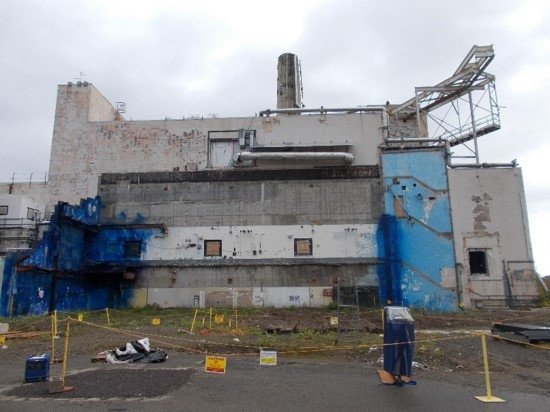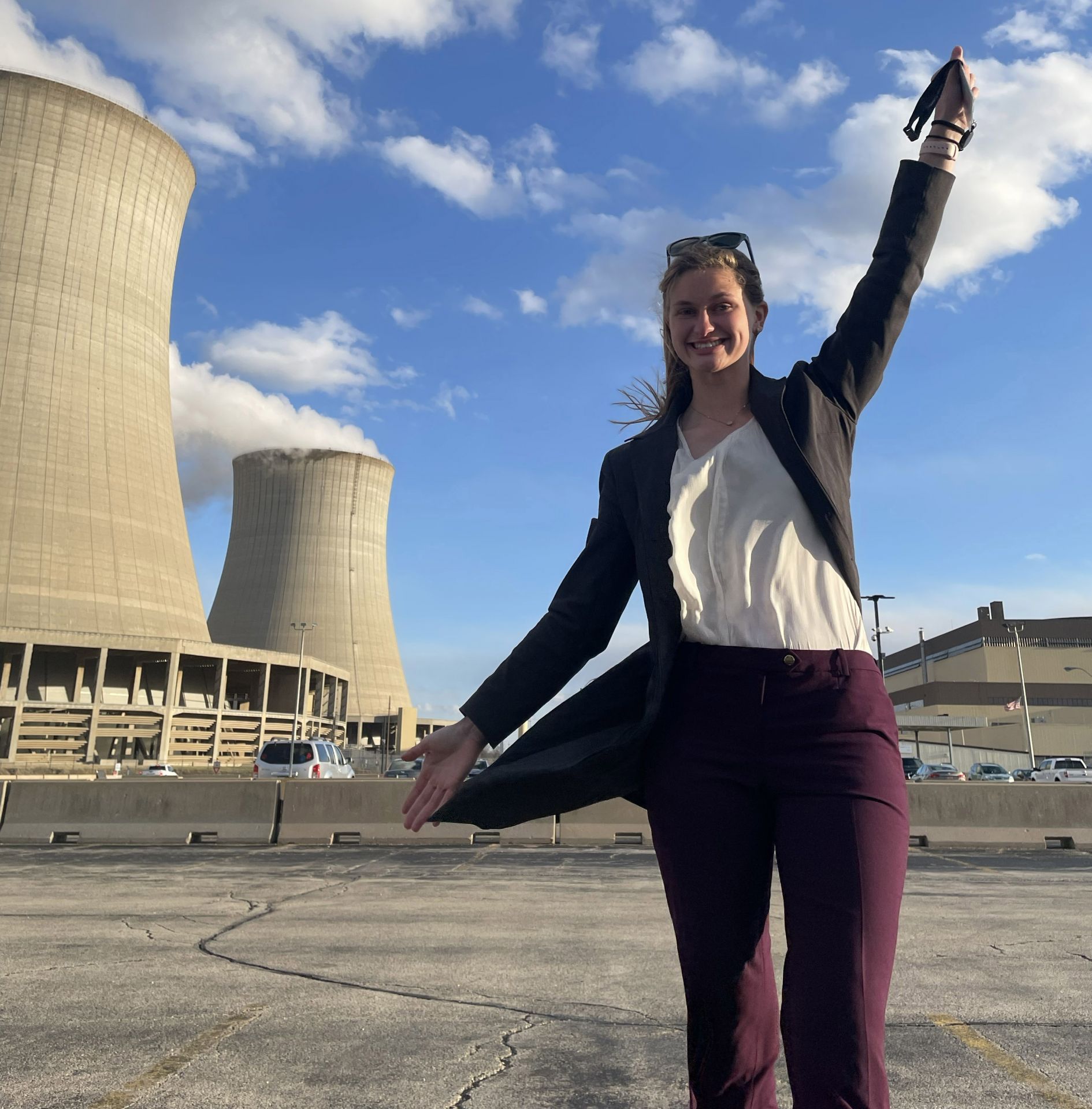NNSA administrator Jill Hruby (left) holds up the signed MOU on HEU conversion during the agency’s virtual meeting with Japan’s MEXT. (Credit: NNSA)
The Department of Energy’s National Nuclear Security Administration (NNSA) has signed a memorandum of understanding with Japan’s Ministry of Education, Culture, Sports, Science, and Technology (MEXT). The MOU describes their commitment to convert the Kindai University Teaching and Research Reactor (UTR-KINKI) from high-enriched uranium fuel to low-enriched uranium fuel. The nuclear nonproliferation–related agreement also calls for the secure transport of all the HEU to the United States for either downblending to LEU or disposition.
Demolition of the MPPB, one of the last remaining major facilities at WVDP, is expected to be completed in about 30 months. (Photo: DOE)
The Department of Energy’s Office of Environmental Management (EM) said it has met one of its cleanup priorities for 2022 by beginning demolition of the Main Plant Process Building (MPPB) at the West Valley Demonstration Project (WVDP) in New York. Located 35 miles south of Buffalo, the 150-acre WVDP site is home to the only commercial spent nuclear fuel reprocessing facility to operate in the United States.
Belgium's Doel nuclear power plant. (Photo: N. Hippert/IAEA)
Unit 3 at the Doel nuclear power plant has become Belgium’s first reactor to be permanently shuttered, in keeping with that nation’s nuclear phaseout policy. The 1,006-MWe pressurized water reactor, which began commercial operation in October 1982, was removed from service last Friday at 9:31 p.m. (local time).
Belgium’s nuclear reactor fleet now consists of six operating units: Doel-1, -2, and -4 and Tihange-1, -2, and -3. Next on the retirement list is Tihange-2, scheduled to be shut down in February 2023.
(Image: Ana Kova /USFusionEnergy.org)
The Department of Energy announced up to $50 million for a new milestone-based fusion energy development program on September 22. The funding opportunity announcement is open to for-profit companies—possibly teamed with national laboratories, universities, and others—that are prepared to meet major technical and commercialization milestones leading to a pilot fusion power plant design.
The Estonian flag. (Image: WikiCommons)
Moving forward with its plan for small modular reactor deployment in Estonia, Fermi Energia has issued tenders to three SMR firms—GE Hitachi (GEH), NuScale Power, and Rolls-Royce, developers of the BWRX-300, NuScale Power Module, and Rolls-Royce SMR, respectively.
The Estevan region (Image: SaskPower)
As part of its planning and regulatory activities to potentially build small modular reactors (SMRs) in currently nuclear-powerless Saskatchewan, Canadian utility SaskPower has selected the province’s Estevan and Elbow regions for further study. (In 2018, SaskPower joined the Canadian government, three other provinces, and four other Canadian utilities to participate in the development of A Call to Action: A Canadian Roadmap for Small Modular Reactors.)
The Effluent Management Facility, part of the Waste Treatment and Immobilization Plant at the Hanford Site. (Photo: Bechtel National)
This spring, the U.S. Government Accountability Office (GAO) released an insightful report reviewing and summarizing the status and performance of the largest projects and operations within the Department of Energy’s Office of Environmental Management (EM), which is responsible for the cleanup of hazardous and radioactive waste at sites and facilities that have been contaminated from decades of nuclear weapons production and nuclear energy research.
Graphic rendition of the Aurora microreactor. (Image: Oklo Inc.)
Some eight months after the Nuclear Regulatory Commission denied Oklo Inc.’s license application to build and operate its Aurora microreactor in Idaho, the company has returned to the regulatory fray. On Wednesday, Oklo announced that it has submitted to the NRC a licensing project plan (LPP) outlining its proposed engagement to support future Aurora licensing activities.



 The International Atomic Energy Agency, for the second successive year, has revised upward its annual projections of nuclear power’s potential growth over the coming decades as an electricity provider.
The International Atomic Energy Agency, for the second successive year, has revised upward its annual projections of nuclear power’s potential growth over the coming decades as an electricity provider.


 The Department of Energy’s Office of Environmental Management (EM) released its
The Department of Energy’s Office of Environmental Management (EM) released its 





 Released this week in the lead-up to November’s COP27 event in Egypt is a report from the United Nations Economic Commission for Europe,
Released this week in the lead-up to November’s COP27 event in Egypt is a report from the United Nations Economic Commission for Europe, 

